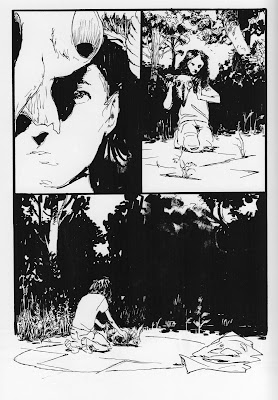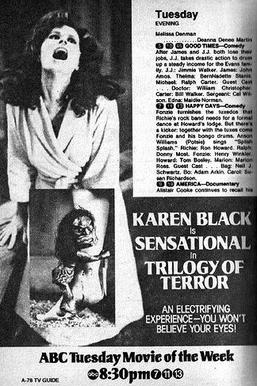You've read my review of Ibrahim Ineke's graphic adaptation of Machen's 'The White People', haven't you? It's just down the page a bit, if not.
Eloise, or, the Realities, to give it its full title, is a longer and purely original work. Original, that is, in terms of character and story. Its central idea and treatment is very reminiscent of British folk horror TV of the Seventies.
This is no accident. In the blurb we read that Eloise is partly 'inspired by classic TV series such as Children of the Stones and The Owl Service'. I would add Penda's Fen to that list, with perhaps a dash of Nigel Kneale. From the start it's clear that Ineke's setting is that of the pre-internet era when social networks for kids consisted of old-style friendships. It was not an idyllic world, though we may remember it as such.
The story begins with Eloise's parents - who are never really more than ciphers - packing for a move. "Where's El?" asks the father. El is out in wilds, talking to what might be an imaginary friend. She asks if he/she/it can come along with her. The friend replies: "I can't. I was born here." And that sums up the story, in essence. Some can move, and change, and grow in certain ways. Some cannot.
When the family arrive in their new town Eloise sets out to explore on her bike. She encounters a strange boy who's into reading. When she introduces herself he does not tell her his name because names 'are just instruments of control devised by adults'. Did I mention the Seventies, earlier?
The boy shows Eloise around town and they end up at a mysterious tower in the woods. Nearby lurks The Green Man, said to be some mad old tramp. But when Eloise encounters him he proves to be more erudite and friendly, and called Abe. It is the nameless boy who proves to be the stranger of the two new 'friends', and soon Eloise is crossing boundaries as she uncovers more facts - or fantasies - about her new home.
Eventually Eloise is transformed in a powerful metaphor for the transition and disturbance of adolescence. It's also a cracking visual sequence of the sort old-time TV directors could only dream of. Throughout the book Ineke's stark, slightly off-kilter artwork challenges the reader to see things differently. I wish I knew more about art, but if I had to describe the style it would be 'post-pulp stark'. It is reminiscent of old-time telly in this respect, with images that are just clear enough to be intensely evocative.
So, another winner from Ineke. The world of
Eloise is one I will certainly return to, in my waking and sleeping hours. But then, in a way, I was born there.
You can see a preview slideshow of
Eloise here. You can buy it
here.


![The Sign of Ouroboros by [Longhorn, David]](https://images-na.ssl-images-amazon.com/images/I/51nOvP8j95L.jpg)




